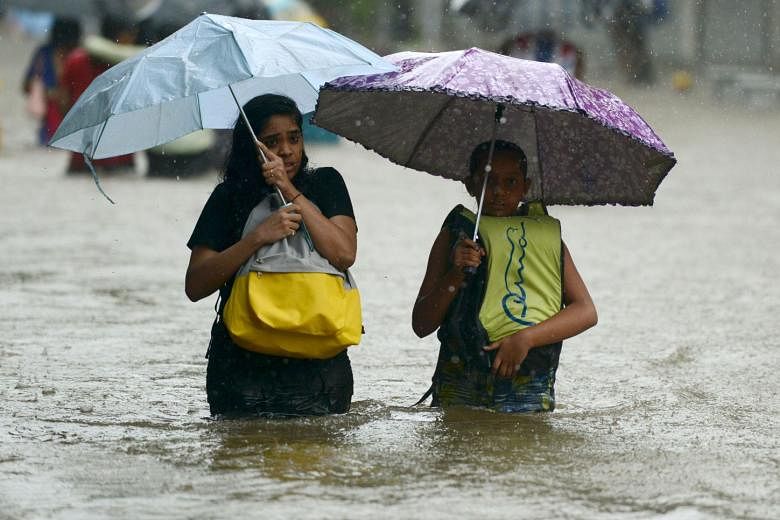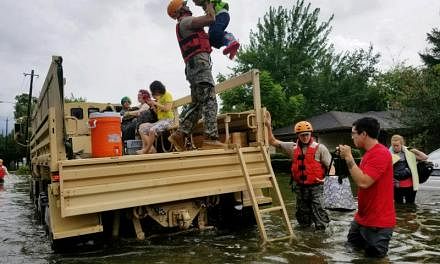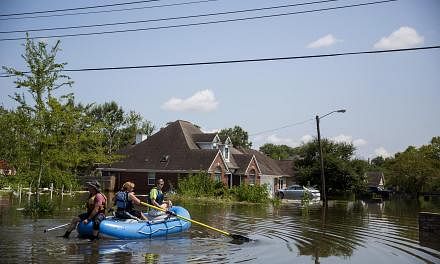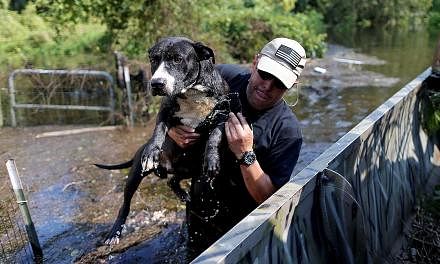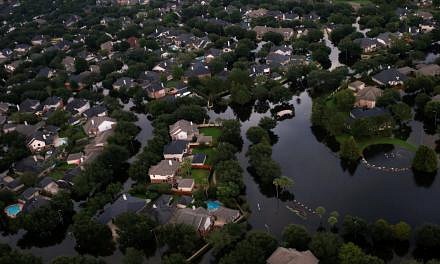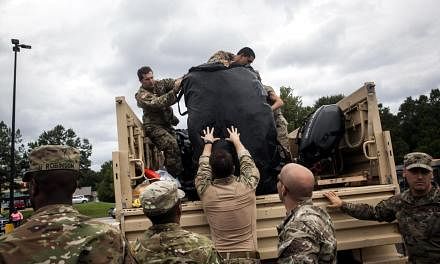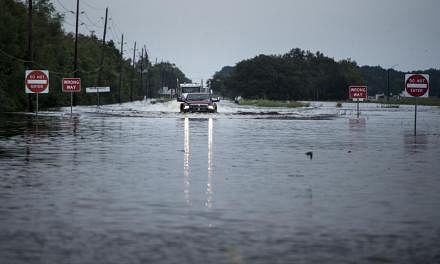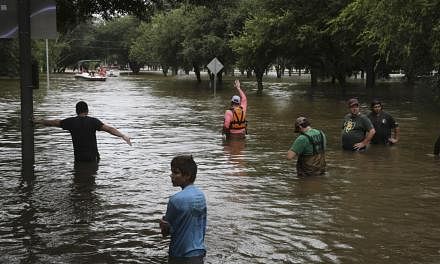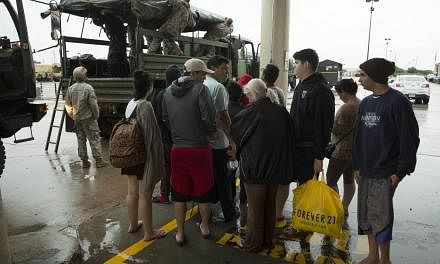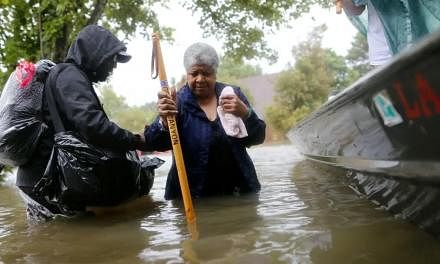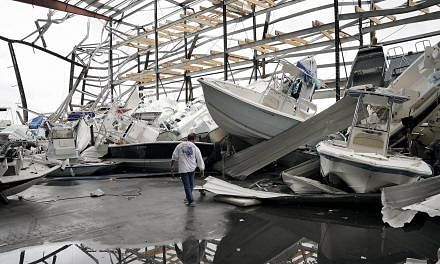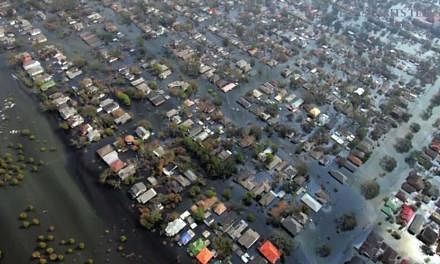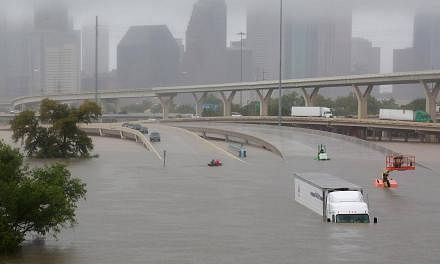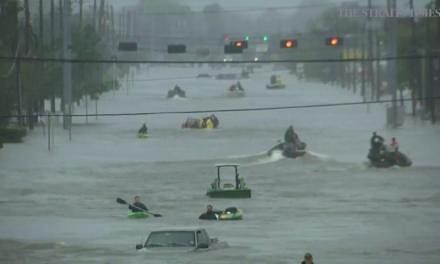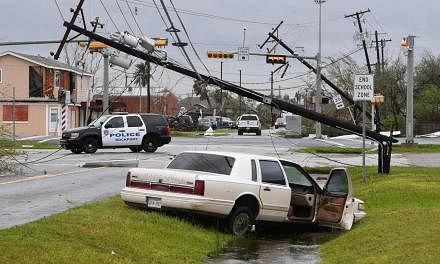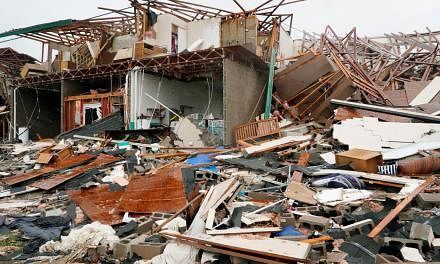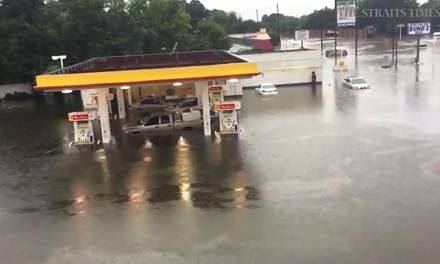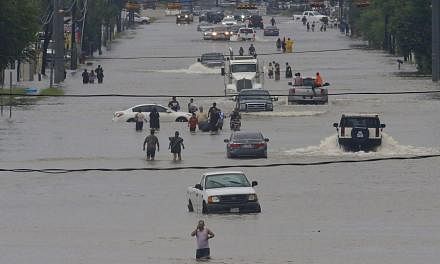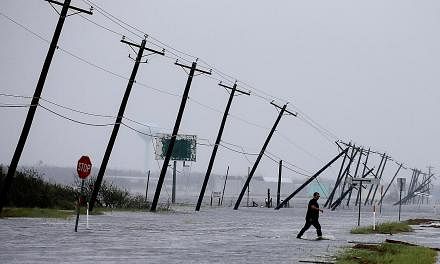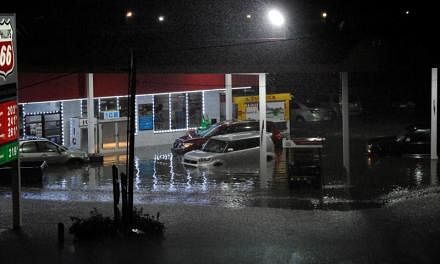WASHINGTON - The Houston neighbourhood where 47 year old Chris Wolf was marooned in her house last weekend is called The Heights - and it is just 18m above sea level. The city itself on average is just 24m above sea level.
Houston is no stranger to floods. Almost every year it has been hit, and lives have been lost. Now, this year's epic flood is triggering a new round of discussions on how coastal cities can adapt to the new threat of increasingly frequent extreme weather events.
The lessons are especially relevant to densely populated coastal cities in Asia, experts say.
As in Mumbai and Bangkok, and half a dozen other coastal Asian cities, rapid growth of concrete urban infrastructure, and conversion of wetlands that act as natural drainage, has made Houston more vulnerable to flooding.
Also mirroring the explosive growth of coastal Asian cities, Houston has grown faster than most other cities in the US, and is today America's fourth largest.
"We're adding about 100,000 people a year," Professor Sam Brody of Texas A & M University in Galveston told NBC News. "With those people come parking lots, pavement, rooftops, roadways - and that makes it very difficult for the water to drain."
"That does have an impact on drainage, because it covers land that would normally be available to absorb storm water," said Greg Norman, spokesman for Houston's Public Works Department, in a phone interview with The Straits Times.
The same applies to Mumbai, which this week also suffered a major flood - an annual occurrence made worse by the constriction of natural drainage and conversion of natural green areas.
"Mumbai cements open spaces, fills wetlands, hacks trees, chokes drains, over-constructs. Result? Traumatic flooding," says editor and environmental activist Bittu Sahgal.
Mumbai suffered a devastating flood in 2005 that killed more than 1,000 people. Since then, if anything the situation is worse, Mr Sahgal told The Straits Times. "More buildings, more compounds, more cement," he said.
And like other overbuilt coastal cities - Bangkok for instance, where in 2011 flood water stood for days without draining - Houston has also been sinking because of withdrawal of water from underground aquifers to sustain its population.
"This city is all about commerce and growth and money, and more commerce and growth and money," Ms Wolf, a resident of Houston since 2011 said over the phone. "There is little regulation, and Texans have a sense of pride, we don't want the government telling us what to do."
But coastal cities are increasingly facing extreme storm and rainfall events, scientists say, at least partially due to global warming.
Hurricane Sandy in 2012, which crippled New York City for a week, was then a 500-year event, Pennsylvania State University professor of meteorology Michael Mann tweeted. But it is now an approximately 30-year event, he said, adding that it "will be a 3 to 5-year event if we don't act".
Houston has tried to adapt, and has more resources to do so than most Asian cities. Since 2011, it has tried to switch from drawing underground water to using surface water, and has tried innovative financial mechanisms to pay for drainage.
"We have made a lot more funding available for street and drainage projects, and they have worked," Mr Norman said.
Hurricane Harvey, though, simply overwhelmed those efforts.
"I have my sympathies, you can't design for that amount of rain," Ani Dasgupta, Washington-based global director of the World Resources Institute's Ross Centre for Sustainable Cities, told The Straits Times.
That does not invalidate the lessons.
"There are two things cities can do - build infrastructure that is resilient to climate and weather events, that might cost 5 or 10 per cent more which is pretty small compared to the risk; and use green infrastructure like water bodies and spillways to manage weather events," Mr Dasgupta said in a phone interview.
Or, take more dramatic action like abandoning some of the most vulnerable areas, giving them back to nature, says Ann Rappaport, lecturer at the Department of Urban and Environmental Policy and Planning at Tufts University in Medford, Massachusetts.
After Hurricane Sandy, parts of Staten Island, a Southwestern borough of New York City where houses were flattened by the storm, were bought over by the government. By 2015, almost 400 homes had been purchased, with scores demolished and the area seeded with vegetation.
"A lot more focus on risk management needs to be taken at the municipal level," Professor Rappaport told The Straits Times.
"A lot of threats related to water and storm damage can be managed with some very thoughtful planning ahead of time. That's the fundamental responsibility of government, to protect its citizens."
